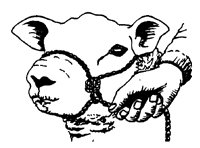We can all remember times when we were taught skills. Sometimes a difficult skill was made easy with clear training, and has remained with us ever since. At other times training was confused; an easy skill was made difficult and we still cannot do that skill.
What is the difference between good and bad training? Sharing a skill is itself, a skill that can be learnt. Thinking about the following points may help you become a better trainer.
Know who you are instructing
Take time to consider who the learners are. Their background will greatly affect the style, manner and content of instruction.
The learners’…
- gender
- age
- interests and needs
- previous experience
- related skills
- related knowledge
- abilities/disabilities
- literacy/numeracy level
- language and mother tongue
…will affect the trainer’s…
- manner
- speed
- vocabulary
- starting point
- teaching method
- assumptions
- lesson content
- language of instruction.
Set your objectives
Too much training is based on what the trainer wants to teach, rather than what the learner needs and wants to learn. Skill sharing needs to be learner-centred rather than trainer centred. So an objective needs to start with a phrase like, ‘By the end of this instruction, the learner will be able to…’
A good objective answers the questions…
- What will the learner do?
- How will they do it? With what? Where?
- To what standard will the skill be done?
Many objectives are too vague. At the end of the instruction it is difficult to tell whether the objective has been achieved or not. A good objective is clear and measurable.
All instruction must be completed in a limited time, so it is important that objectives are realistic, both in terms of what the learner can achieve, and in terms of the time available.
Identify learning stages and key points
All but the simplest skills can be divided into learning stages. The learner needs to be able to do each stage before moving to the next. At each stage there will be key points to emphasize:
- important things to look out for
- common errors that people make
- safety or legal points that must be noted.
Keep the number of key points to a minimum. Don’t make the skill more difficult than it is!
Preparing your presentation
It is useful to write a Skills Training Plan, perhaps similar to the following the example presentation below.
Example presentation: making a temporary halter











